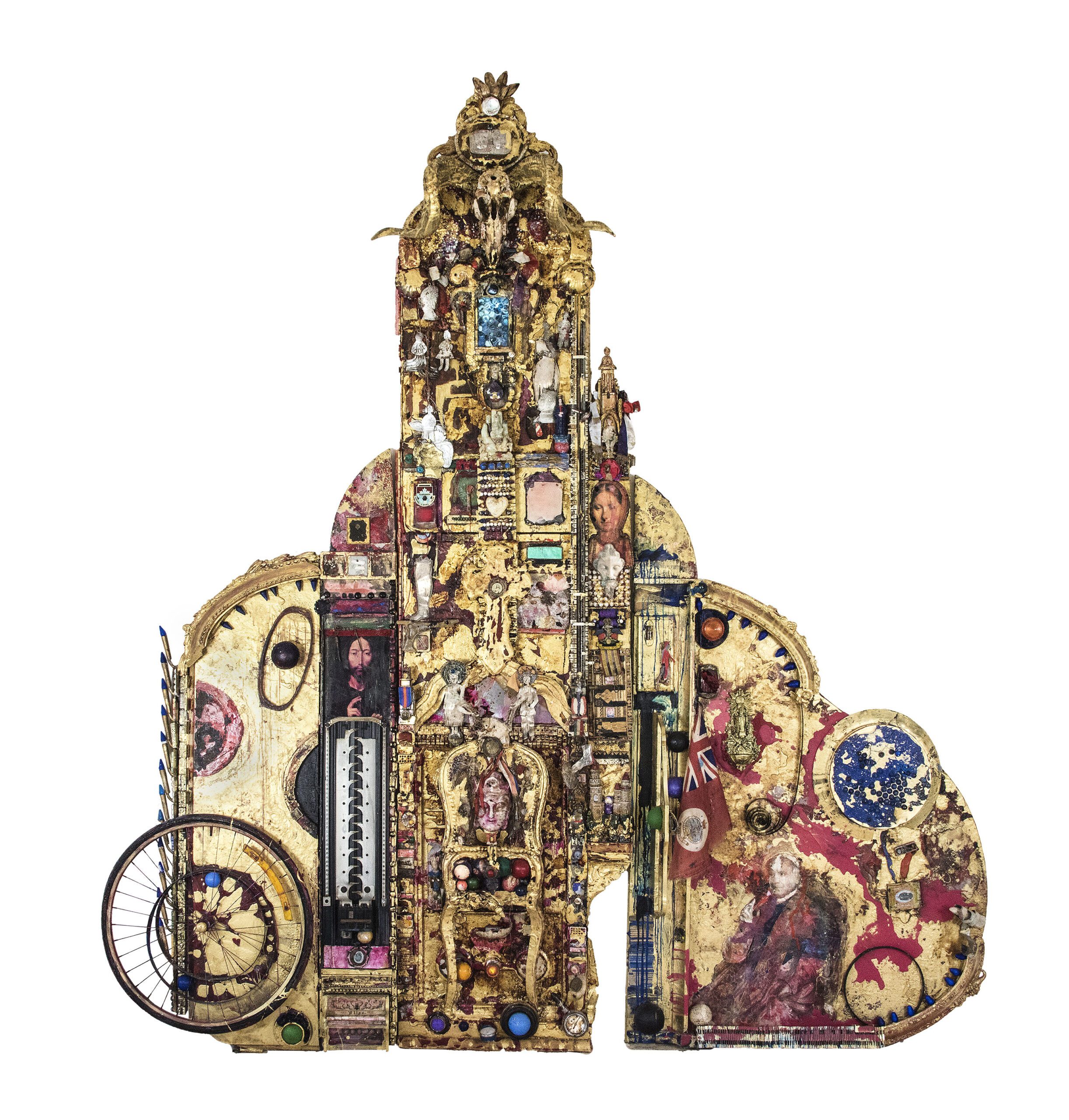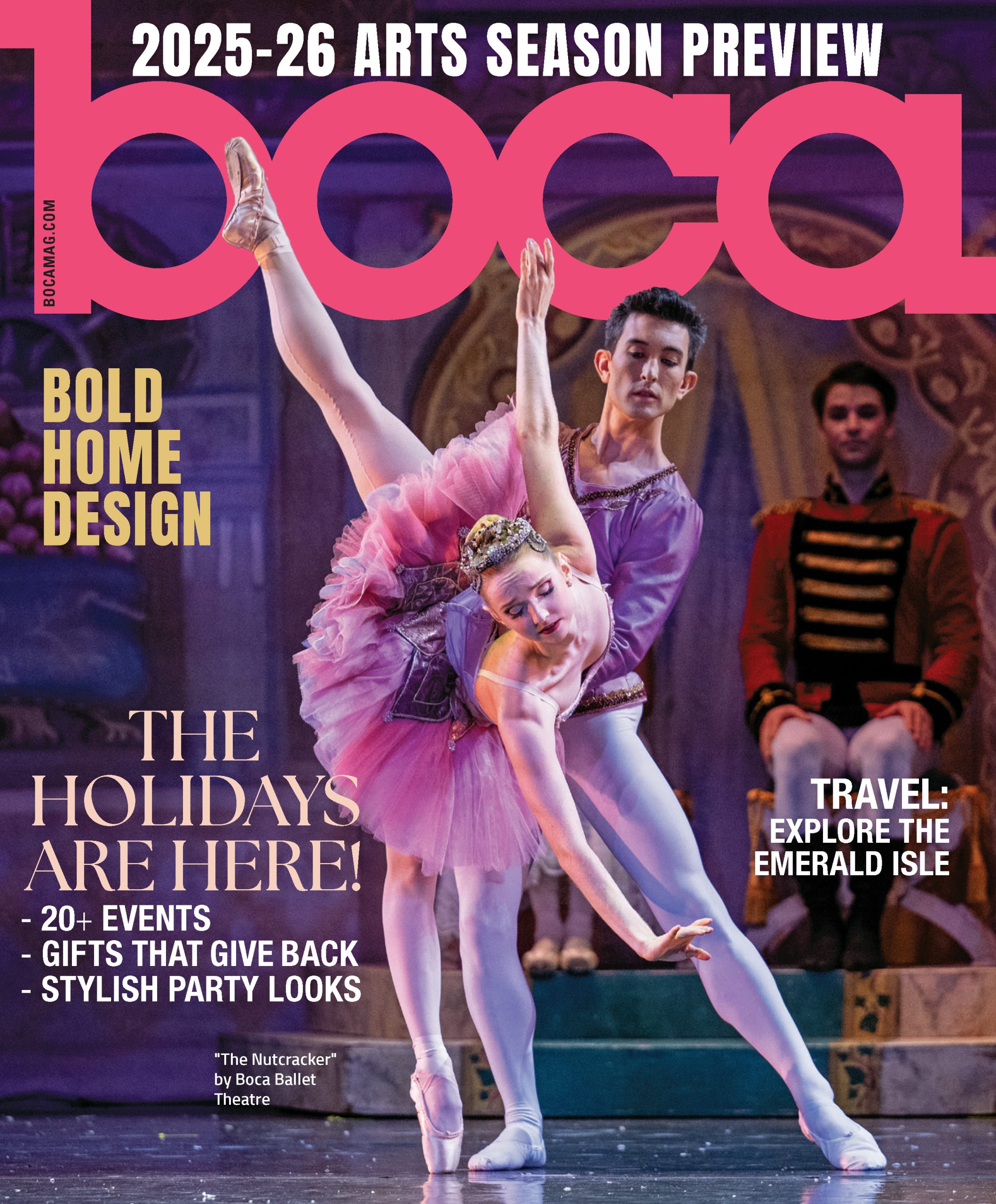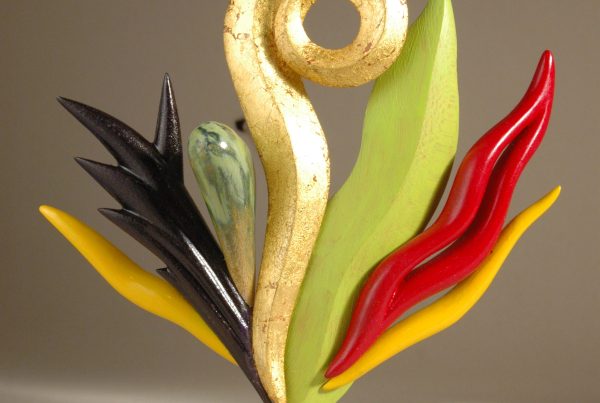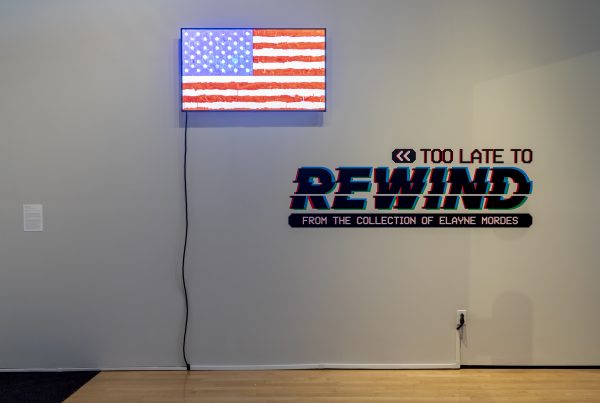
At first awestruck blush, Patricia Nix’s work seems absolutely insane. And I mean that as a compliment, of course. She doesn’t create sculptures or paintings so much as phantasmagorical monuments to imaginary realms, often on a monolithic scale.
Nix is a collagist who constructs totems from secondhand ephemera, from doll parts to broken musical instruments to religious iconography and animal horns. Some suggest humanoid forms, while others adopt more abstract shapes. Most feel like offerings to pagan gods. The best reside on the border of the nightmarish and comic, a twilight zone that both attracts and repels. I’d want to buy these pieces in an instant, if I wasn’t afraid of the kind of energy they’d attract in my home.
These are the weird emotions that percolated during my visit this week to “American Baroque,” the Boca Raton Museum of Art’s audacious survey of Nix’s ongoing oeuvre. The native Texan has been making art for more than half a century, and she now works in her studio on Palm Beach, making surrealist outsider art that couldn’t be more incongruous from the other galleries on the island, with their accessible Pop art and gilded antiques. There’s little accessibility in Nix’s macabre mixed-media goulashes. And those stately figurines in the Worth Avenue galleries? She’s more likely to use them as readymade elements in her collages than display them.

While there’s no linear chronology to the exhibition, “American Baroque” starts quite rightly, for visitors traveling clockwise, with one of her early pieces, “Bulldog on a Tightrope,” from 1978. Begin with this embryonic work, with its muted circusy atmosphere, because it only gets weirder from here. “Beauty and the Beast,” a sculpture begun in 1985 and completed in 2017, features the body of a string instrument encased in a cabinet, topped with the head of a monster which is sprouting wild antlers. The beast part is clear, so does the broken instrument represent music, which represents beauty?
Overthinking is de rigueur for most of these masterpieces, but it’s unnecessary for their appreciation. “Cowboy and Indian,” another wall-mounted assemblage, resembles neither of its titular archetypes, though it does suggest a humanoid animal chimera with a disemboweled keyboard for a spine. “As Time Goes By” conjures an instrument from some madman Terry Gilliam set—part chair, part piano, part clock, part midway amusement whose constituent parts have been stripped of their functionality.

This transformation—from valued appliances, instruments and icons with individual purposes, to reinvented parts of an esoteric whole—is a recurring element across her oeuvre, often resulting in a mordant wit. In “Mother and Child,” a porcelain doll head rests atop what appears to be a miniature stove where inside, instead of a “bun in the oven,” there resides only wood shavings and cracked glass. The title character in “Fat Girl,” from 1984, is comprised of two chubby “legs” (actually ornate table legs), a jigsaw-puzzle heart with missing pieces, and an inverted tortoise shell to approximate an oversized midsection.
As Nix continued her practice into the Aughts, her art has seemingly become more vertical, more deliberately totemic, and even less figural. “Allegro 1” and “Allegro 2” are, in typical totem fashion, divided sectionally—abstract paint swatches here, dominos there, piano keys over there. “Flexible Totems” is a series of 24 narrow objects, each a work of extravagant collation, each suggesting a belt for an eccentric giant.

The exhibition concludes with her large-scale interpretations of tarot cards, paintings composed of fever-dream visions of devils and hanged men, before coming full circle with “The Magic Mountain.” Completed in 2017, this newest sculpture is also the most massive in the exhibit, a golden shrine that feels like a Patricia Nix greatest hits collection, with its mounted steer head, its tiny piano, its billiard balls and bicycle wheel and dominoes and stopwatches. It’s festooned with too many religious icons to count, from Buddhas to crucifixes, popes to saints.
It comes across, like so many of her manic sculptures, like an object of worship, but of what? Certainly, Nix’s catchall ingredients and ambiguous aims transcend any one belief system. For all I know, she’s creating her own.
“Patricia Nix: American Baroque” runs through Oct. 22 at Boca Raton Museum of Art, 501 Plaza Real, Boca Raton. Admission is $12 adults, $10 seniors and free for students with ID. Call 561/392-2500 or visit bocamuseum.org.







